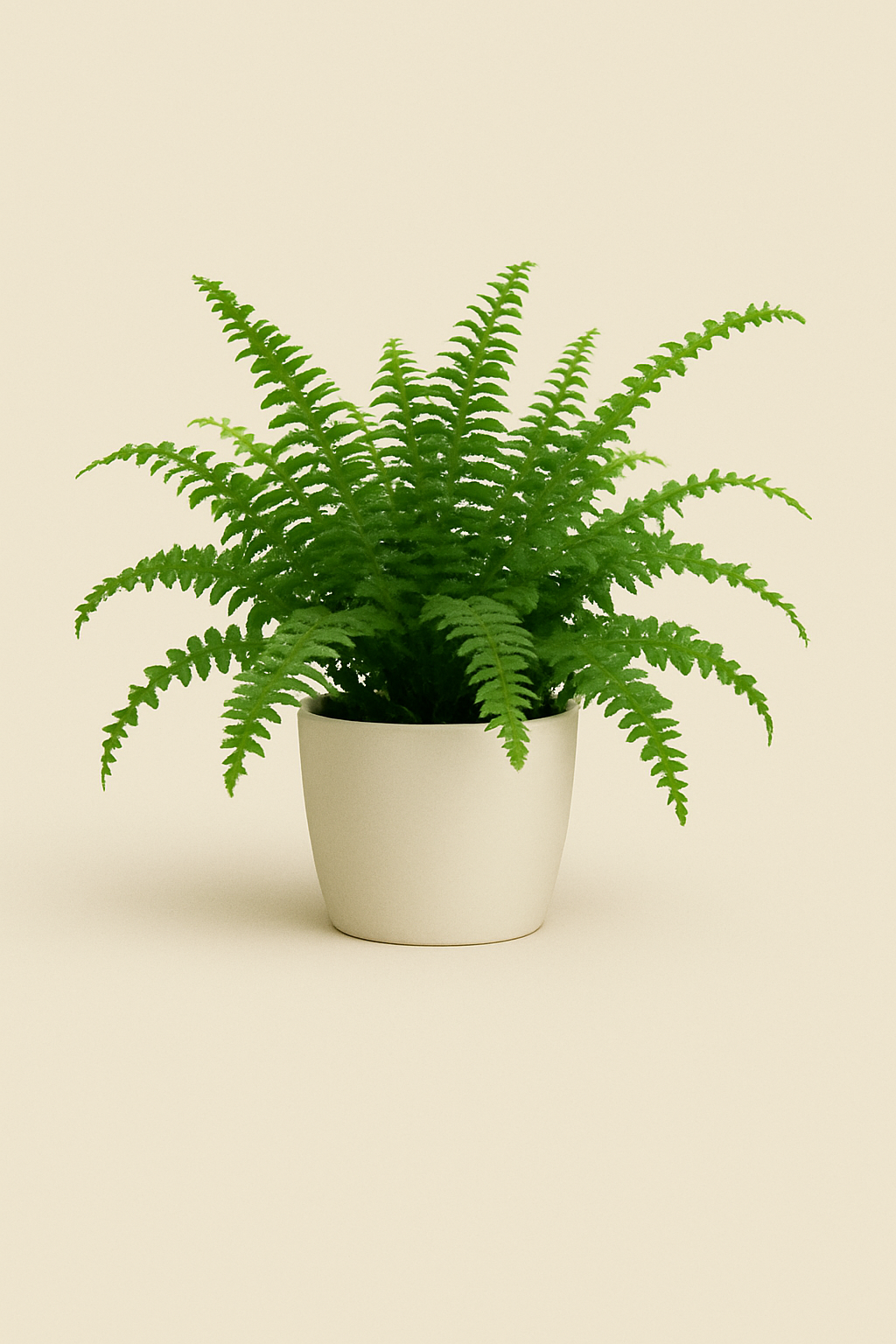Boston Fern

Scientific name: Nephrolepis exaltata
☘️ Toxicity: Safe for cats
☀️ Ideal light: Bright indirect light or partial shade
💧 Watering: Frequent; keep the soil consistently moist
The Boston Fern is a lush tropical plant known for its finely divided, arching fronds that bring softness and movement to any space. It thrives in humid, shaded environments and is a perfect choice for hanging baskets or decorative planters. Elegant, timeless, and safe for cats, it’s one of the most popular ferns for indoor decoration.
Essential care
- Light: Prefers bright, indirect light or partial shade; direct sun can burn the leaves.
- Water: Keep the substrate evenly moist at all times, but never soggy. Avoid leaving standing water in saucers.
- Humidity: High humidity is crucial — mist the fronds regularly or use a humidifier.
- Substrate: Rich in organic matter, light, and well-draining (e.g., potting soil, humus, and coconut fiber).
- Temperature: Ideal between 18–26 °C (64–79 °F); avoid cold drafts and dry air.
Common problems
- Yellowing fronds: Usually due to overwatering or poor drainage.
- Brown tips: Caused by dry air or low humidity.
- Leaf drop: Can result from cold drafts or sudden environmental changes.
Propagation
- Division: Separate rhizomes with roots and fronds during repotting in spring.
- Spores: Possible but slow; division is the most practical method.
Cat safety
- Classification: Non-toxic to cats.
- Best practice: Even though it’s safe, keep it slightly out of reach to prevent frond damage from playful cats.
💡 The Boston Fern helps purify indoor air by removing formaldehyde and toluene — and it loves humid spots like well-lit bathrooms.
Quick checklist
- ☀️ Indirect light or partial shade
- 💧 Frequent watering
- 🌫️ High humidity
- 🪴 Light, organic soil
- 🐾 Safe for cats